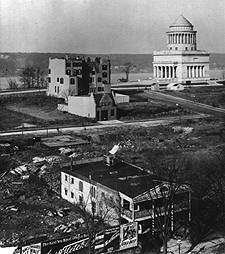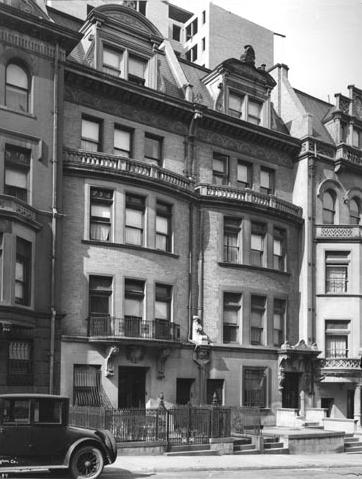From A Neighborhood in Transition
From the late 1700's, when Morningside Heights was nothing more than tranquil wheat fields to its present status as an educational oasis and desirable commercial and residential area, Morningside Heights is a neighborhood rich with history. As a neighborhood with multiple institutions of higher education, Morningside Heights has long held a reputation for intellect and advanced learning in New York City. However, the history of the neighborhood encompasses much more than that. As the site for battles, protests, and ongoing controversial use of land, Morningside Heights maintains its vibrant past as a historical stronghold in New York City.
Contents |
The Founding
Europeans first knew Morningside Heights as Vandewater Heights after 17th century Dutch farmer and landowner, Harmon Vandewater (Note – the name “Morningside Heights” will be used from this point on). On September 16, 1776 an important battle between American and British troops occurred at modern-day Broadway and 116th Street. It was a major victory for the Colonial American Army. During the Revolution, Morningside Heights was renamed from Vandewater Heights to Bloomingdale, after Bloomingdale Road that ran through it (Bloomingdale Road is Broadway today). Morningside Heights from its founding until the late 19th century remained undeveloped. Most of the land was composed of scattered farmland.
A Lack of Value in the Face of Expansion: 19th century Morningside Heights
Morningside Heights (Bloomingdale) during the 19th century was commercially invaluable. Geology was the prime reason. Being situated on a rocky plateau, commercial development of this neighborhood was difficult and expensive. Not to mention that Morningside Heights was relatively isolated from the rest of Manhattan Island. Its geology created a natural barrier from its neighbor, Harlem. The Morningside cliff splits the upper-lying neighborhood of Morningside Heights from the low-lying, plains of Harlem. With these two geologic characteristics, Morningside Heights did not develop in infrastructure, as did the rest of Manhattan Island. One of the few developments that did occur, however, was the asylum system. With natural valleys in Morningside heights, proponents for asylums believed that patients could have a better environment in this neighborhood. They concluded that the valleys were therapeutic to patients. Until the 1880’s, Morningside Heights remained a semi-rural neighborhood of Manhattan.
Urbanization of Morningside Heights
Post-Great Depression to the Present Day
Following the end of the Great Depression and eventually World War II, Morningside Heights had undergone many changes, and continues to today. Columbia University was especially involved in creating, or attempting to create new structures on and around its campus. Such proposals like the gymnasium in Morningside Park were struck down by public outcry. Others like the conversion of College Walk from a car-accessed road to a public walking path met less resistance and hence were accomplished. Ultimately, Morningside Heights continues to be a hotspot in activity as it was during the late 19th century. The current gentrification debate is just another aspect of a living and ever-changing Morningside Heights.
Interactive Timeline of Morningside Heights
Click and drag to experience the chronology of the neighborhood
References
1. http://www.morningside-heights.net/history.htm
2. Morningside Heights: A History of Its Architecture and Development by Andrew S. Dolkart
Go back to Politics, Economics, and History
Go back to Main Page


